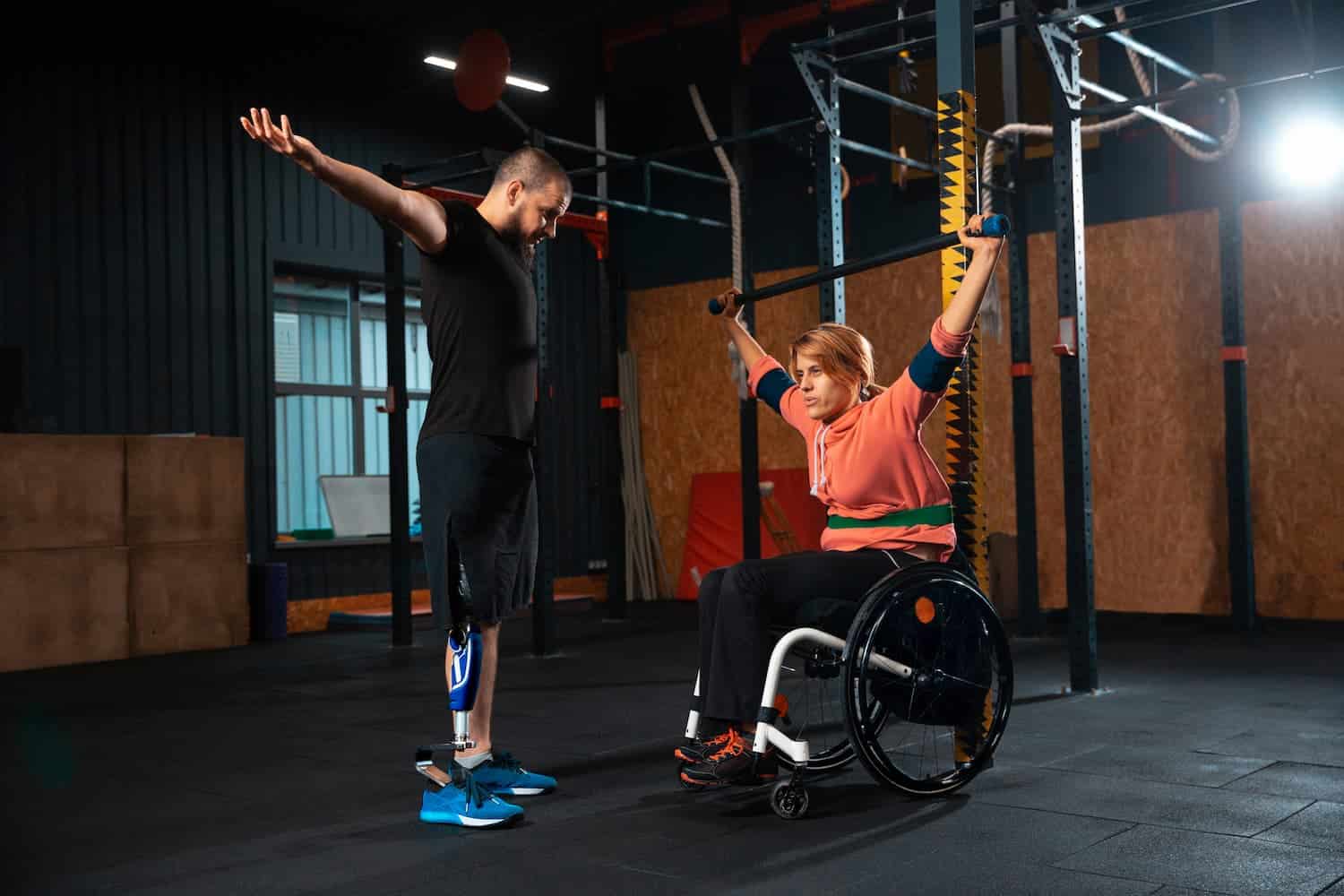Being a personal trainer is a great way to help others become fit and healthier; however, you may eventually come across people who have mobility issues. Personal trainers need to practise inclusivity and diversity to work with people of all abilities.
But do you need to have any specific qualifications in this area? Or is it possible for a complete beginner personal trainer to work with those who have mobility issues?
No matter your situation, you’ll find the answers you need in this article. We’ve put together some information to help you to work with those who have mobility issues.
What is a Mobility Issue?
People who have mobility issues may have trouble walking and moving normally. Mobility issues can happen to people of any age, too.
Mobility issues may include some of the following:
- Neurological issues
- The ageing process
- Obesity
- Injury
- Mental health issues
- And more
Some clients may be wheelchair-bound, while others have conditions such as arthritis, osteoporosis, multiple sclerosis, or cerebral palsy. This is not an exhaustive list of mobility issues, but it gives you an idea of what conditions can cause issues with movement.
Other clients may be recovering from an accident or stroke and want to make progress with their recovery through physical activity and training. There are others who may have sight, hearing, or speech issues. Certain clients may have a learning disability or mental health issues.
Why Exercise is Important
Exercising with a personal trainer can help with overall physical wellbeing. For instance, after an accident, a patient may want/need to strengthen certain parts of their body that can be trained. This may help them increase bone density and help with weight management.
For clients who have suffered a stroke, part of their rehabilitation process is neuromuscular and central nervous system retraining. These clients may benefit from exercise that stimulates the brain and improves their coordination.
Depression is a common issue for these patients, too, but exercise can be beneficial for their mindset and overall sense of wellbeing and accomplishment.
Working with these clients can also improve their overall wellbeing by giving them a sense of purpose and achievement. They can also focus on what they’re able to do rather than their disability. In addition, working with these patients also gives them a positive environment where they can talk with others and socialise as they work toward recovery.
What Qualifications Does a Personal Trainer Need?
A PT (physical trainer) should be qualified up to Level 3 of Instructing Physical Activity and Exercise Knowledge Requirements.
This qualification includes a range of performance requirements, such as:
- The way you collect and analyse data information about patients with mobility issues (including screenings)
- Barriers a client may have to taking part in physical activity & finding ways to overcome them
- Adapting programs & choosing the best equipment for each client
- Safe management of the client’s exercise environment and effectiveness
What Should a Personal Trainer Bear in Mind?
The key to working with clients who have mobility issues is to be sensitive to any issues they may have. Never talk down to such clients or presume they’re not able to do a certain exercise without talking to them first. As a personal trainer, it’s never OK to discriminate against a client because of their disability or any other reason.
Some clients with mobility issues may have barriers to participation that a personal trainer must also be sensitive to. And some clients may already be involved in athletics or sporting activities at a high level. For instance, Paralympians, wheelchair basketball players, and those who participate in wheelchair marathons.
Safety is always of the utmost importance as a personal trainer. It’s essential to look at which adaptations to ensure that a client can exercise safely and effectively. Conditions like this may include high blood pressure, obesity, and others that are not obvious.
As with any client, it’s likely these clients need to have specific goals. As a personal trainer, it’s your job to find out what these goals are and help your clients work toward them. Using your client’s knowledge and experience, it’s easier to find new ways for them to progress toward their goals. The client, on their own, may not know about the methods you suggest.
Adapted Gym Equipment
Many gyms have equipment that has been adapted to fit the needs of clients who have disabilities. The adaptations may range from arm bikes to rowing machines with seats that offer additional support. As a personal trainer, you must ensure your client is familiar with the benefits of these machines and how they can use them safely and effectively.
For instance, if you have a client in a wheelchair and want to include a chest exercise in their workout, you probably won’t be able to have this client do chest presses on a bench. In that case, you could use a resistance band instead. Have your client stretch the band out in front of them with both hands and repeat. This works the chest muscles as much as a chest press.
Resistance bands of different strengths can be great for different disabled clients, depending on their capabilities and needs. The bands are versatile pieces of gym equipment that are effective for strength training for patients who have mobility issues.
Along with resistance bands, other pieces of equipment can also be helpful for disabled clients, including:
- Dumbbells
- Ankle weights
- Grip strengtheners
- Medicine balls
The type of equipment for each client will vary depending on their skills and their unique needs. However, being flexible with your thinking can help you modify the exercise for patients who have disabilities.
Many sports can also be adapted for a wheelchair, including basketball, tennis, rugby, and even track events. Other choices may include horse riding, swimming, rowing, and yoga.
Summing It Up
Working with clients who have mobility issues can be rewarding and beneficial. You can help clients achieve their fitness goals and use your own passion for fitness to change their lives for the better.
As a personal trainer, you can play an essential role in helping disabled clients to gain confidence and feel more positive, which can make a huge impact on the rest of their lives.







